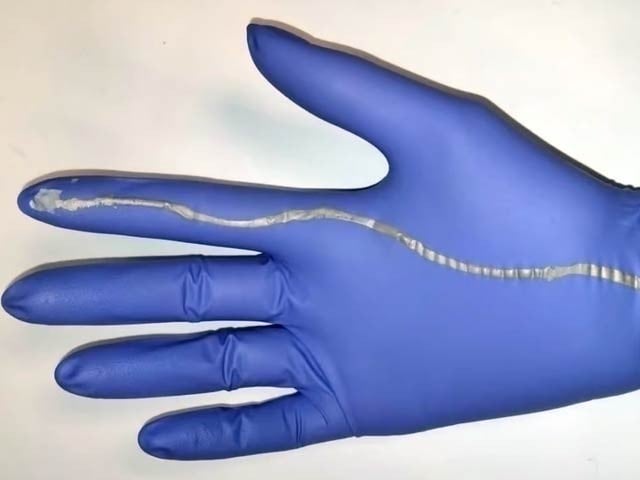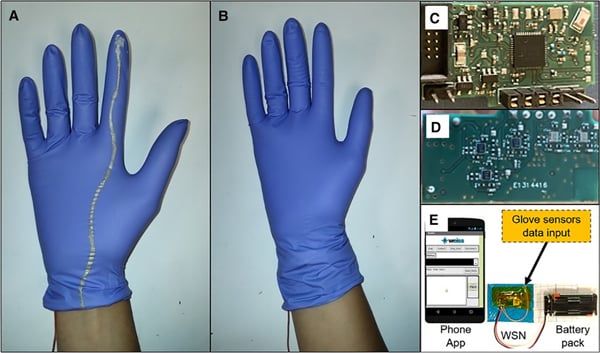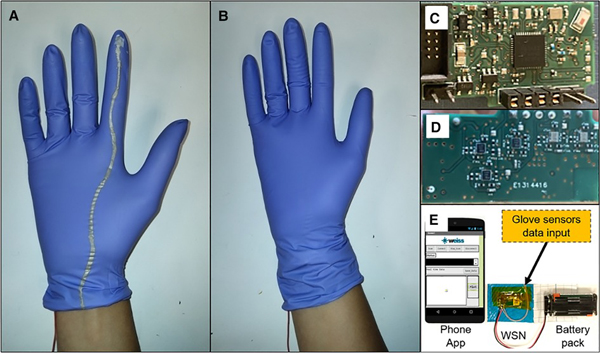
British experts have created a sensitive glove for just a dollar that can help in childbirth. Photo: Courtesy of University College London
London: Experts at University College London have developed a surgical glove that can sense pressure and detect the movement and position of the baby in the mother’s womb. This can reduce the risk of miscarriage and the number of stillbirths.
The condition and position of the baby in the womb can be known with the experimentally made gloves. In countries with resources, this work is done by ultrasound, but in remote areas of poor countries, there is never electricity, sometimes there are no machines, and there are also less experts.
According to UNICEF, this is why stillbirths in poor countries are high and cost only about one dollar. It has sensitive sensors printed on the finger locations. These sensors are composed of metal oxide nanocomposite materials. They are so sensitive and thin that they can be worn over traditional gloves.

A gynecologist wearing gloves can help determine the position of the baby’s head by palpating the uterus. The glove’s sensors then indicate how much force is allowed and how much force can affect the child. However, the sensors can also display a blurry image of the entire scene on the computer screen, and in the next step, the image of the sensor will be visible on the smartphone.
This glove is made by Dr. Shireen Jafar Ali. She says that the glove informs us about the correct position and path of the baby’s head which can help in safe delivery of the baby.
It has been tested on silicone models of the mother’s womb and babies trapped in them with great success. This important discovery is reported in Frontiers in Global Women’s Health.
(function(d, s, id){
var js, fjs = d.getElementsByTagName(s)[0];
if (d.getElementById(id)) {return;}
js = d.createElement(s); js.id = id;
js.src = “//connect.facebook.net/en_US/sdk.js#xfbml=1&version=v2.3&appId=770767426360150”;
fjs.parentNode.insertBefore(js, fjs);
}(document, ‘script’, ‘facebook-jssdk’));
(function(d, s, id) {
var js, fjs = d.getElementsByTagName(s)[0];
if (d.getElementById(id)) return;
js = d.createElement(s); js.id = id;
js.src = “//connect.facebook.net/en_GB/sdk.js#xfbml=1&version=v2.7”;
fjs.parentNode.insertBefore(js, fjs);
}(document, ‘script’, ‘facebook-jssdk’));


